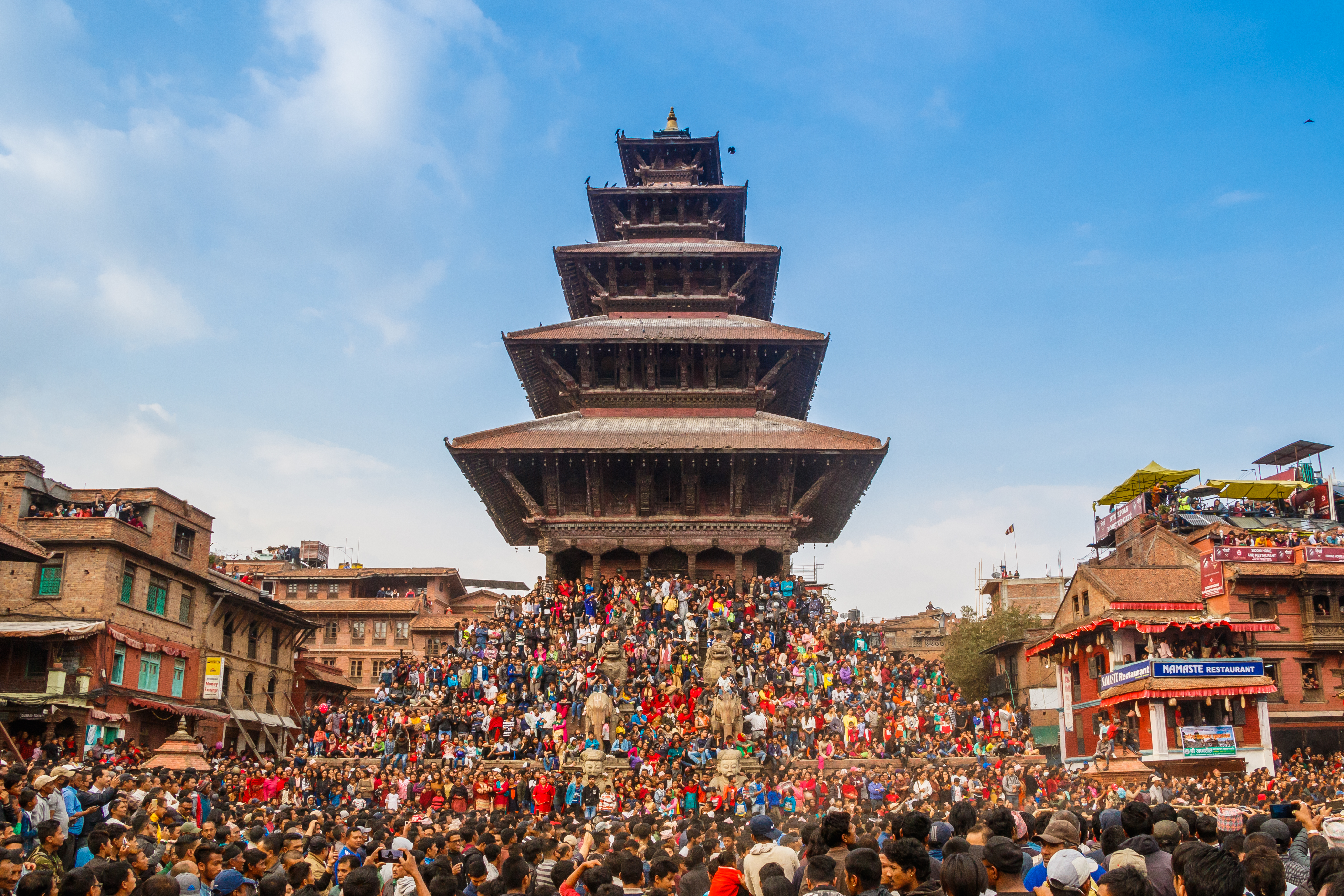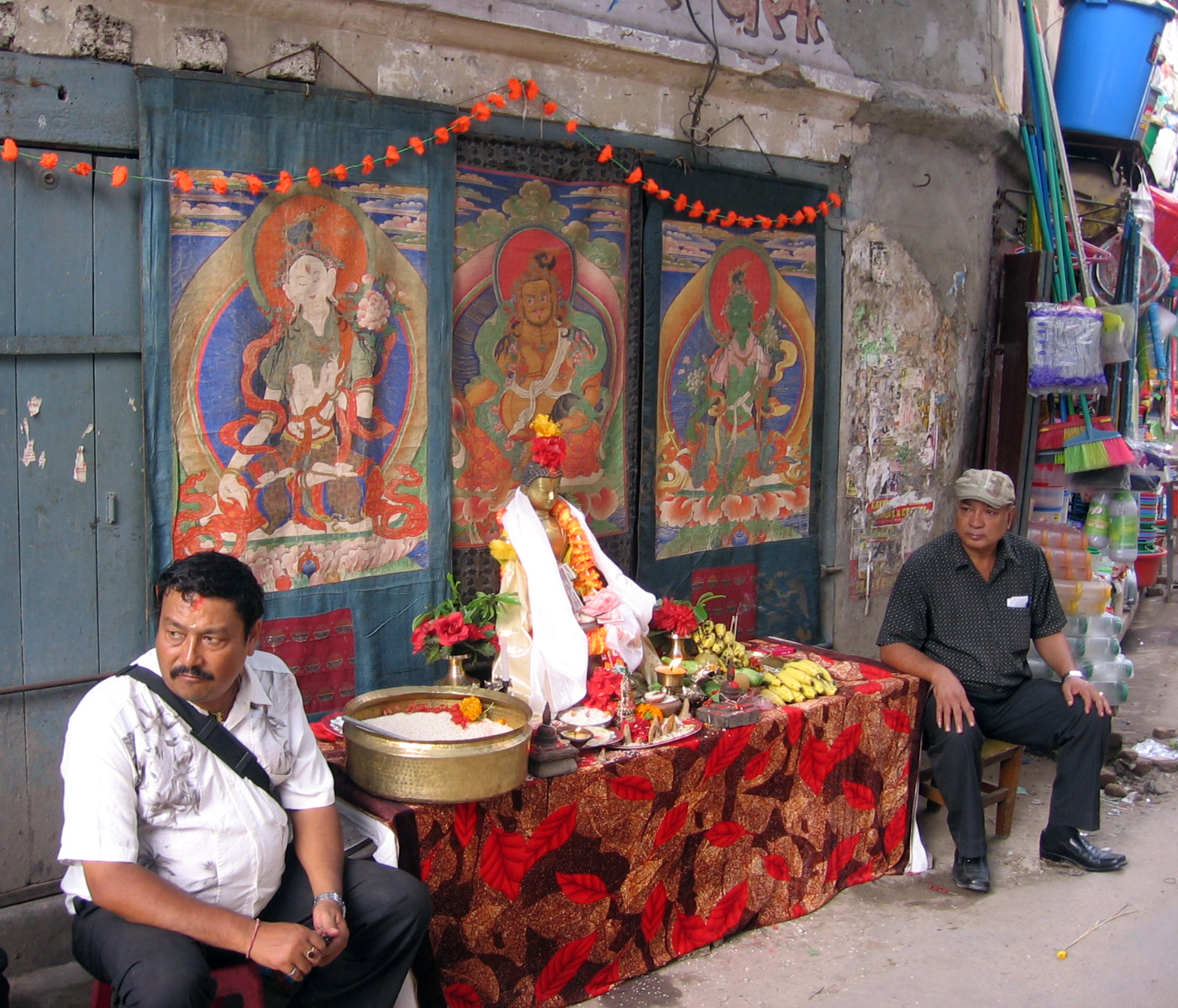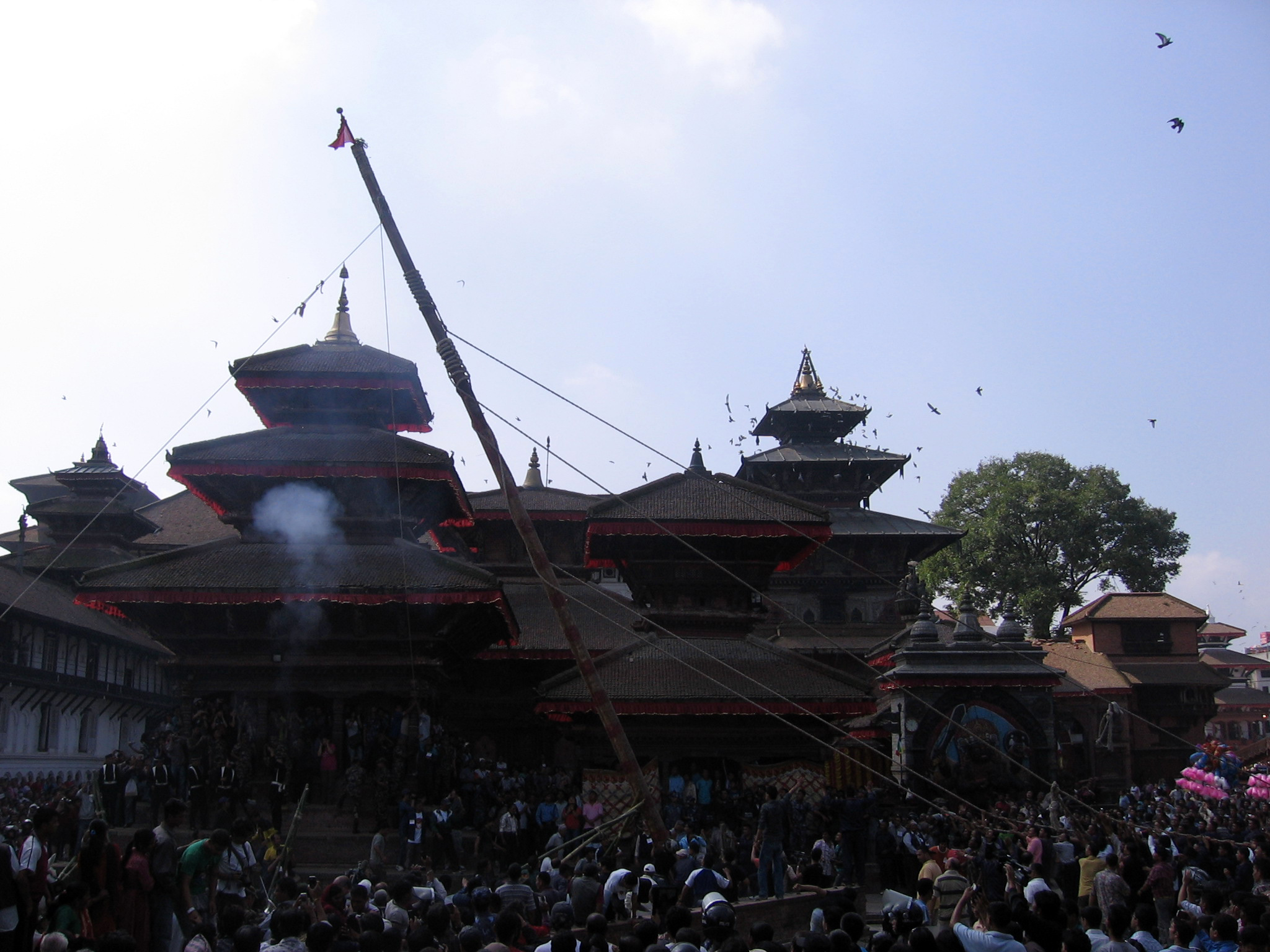|
Newa Festival
The Newas are well known for their lavish festivals. The word jatra is used for carnivals. Based on Nepalese calendar, Nepal Sambat, the different festivals are: * Swanti * Sakimila Punhi * Yoma * Yomari Punhi * Ghayh * Swasthani * Shree Panchami * Sila Chahre * Holi Punhi * Pahan Charhe * Bisket Jatra * Jana Baha Dyah Jatra * Bungdya Jatra * Bhoto Jatra * Swanya Punhi * Sithi Nakhah * Gathan Mugah * Gunla * Gunhu Punhi * kuchhi bhoyey * * Pancha Dan * Yenya Indra Jātrā, also known as Yenyā (Nepal Bhasa: येँयाः), is the biggest religious street festival in Kathmandu, Nepal. The celebrations consist of two events, Indra Jātrā and Kumāri Jātrā. Indra Jātrā is marked by masked danc ... * Mohani * Mataya (Lalitpur) External links Jwajalapa {{Newar Newar ... [...More Info...] [...Related Items...] OR: [Wikipedia] [Google] [Baidu] |
Newar People
Newar (; new, नेवार, endonym: Newa; new, नेवा, Pracalit script:) or Nepami, are the historical inhabitants of the Kathmandu Valley and its surrounding areas in Nepal and the creators of its historic heritage and civilisation. Page 15. Newars form a linguistic and cultural community of primarily Indo-Aryan and Tibeto-Burman ethnicities following Hinduism and Buddhism with Nepal Bhasa as their common language. Newars have developed a division of labour and a sophisticated urban civilisation not seen elsewhere in the Himalayan foothills. Newars have continued their age-old traditions and practices and pride themselves as the true custodians of the religion, culture and civilisation of Nepal. Newars are known for their contributions to culture, art and literature, trade, agriculture and cuisine. Today, they consistently rank as the most economically and socially advanced community of Nepal, according to the annual Human Development Index published by UNDP. Nepal ... [...More Info...] [...Related Items...] OR: [Wikipedia] [Google] [Baidu] |
Jatra (Nepal)
Jatra (Nepal Bhasa: 𑐖𑐵𑐟𑑂𑐬𑐵, जात्रा) refers to the types of Newa Festivals involving street festival or carnival.Lonely Planet Trekking in the Nepal Himalaya - Page 357 Bradley Mayhew, Joe Bindloss - 2009 "The people of Bhaktapur celebrate Bisket Jatra (Death of the Snake Demons Festival) on this day." Some jatras * Janmadya Jatra: Celebrated in central Kathmandu * Yenya (Indra Jatra) : Celebrated in central Kathmandu * Bungdya Jatra: Celebrated in Patan * Bisak Jatra: Celebrated in Major parts of Bhaktapur * Bisket Jatra: Celebrated in Bhaktapur, Dhapasi, Madhyapur Thimi, Tokha and other places in Nepal * Bhoto Jatra: Celebrated in Patan * Gai Jatra: Celebrated on the Kathmandu Valley * HaadiGaun Jatra: Celebrated in Hadigaun in Kathmandu *Khame Jatra:Celebrated on the Bhaktapur on the ninth day of Dasain * Shikali Jatra: Celebrated in Khokana, Lalitpur * Dolkhala Jatra: Celebrated in Dolkha * Dharmasthali Jatra: Celebrated in Dharmasthali in Kathma ... [...More Info...] [...Related Items...] OR: [Wikipedia] [Google] [Baidu] |
Nepal Sambat
Nepal Sambat, also spelled as Nepala Sambata, (Nepal Bhasa: , Nepali: ) is the lunisolar calendar used by the Newari people of Nepal. The Calendar era began on 20 October 879 AD, with 1142 in Nepal Sambat corresponding to the year 2021–2022 AD. Nepal Sambat appeared on coins, stone and copper plate inscriptions, royal decrees, chronicles, Hindu and Buddhist manuscripts, legal documents and correspondence. Nepal Sambat is declared a national calendar in Nepal, is used mostly by the Newar community whilst Bikram Sambat (B.S) also remains a dominant calendar throughout the country. Establishment The name Nepal Sambat was used for the calendar for the first time in Nepal Sambat 148 (1028 AD). Sankhadhar Sakhwa The Nepal Sambat epoch corresponds to 879 AD, which commemorates the payment of all the debts of the Nepali people by a merchant named Sankhadhar Sakhwa (Nepal Bhasa: ) in popular legend. According to the legend, an astrologer from Bhaktapur predicted that the sand at the ... [...More Info...] [...Related Items...] OR: [Wikipedia] [Google] [Baidu] |
Swanti (festival)
Swanti (Devanagari: स्वन्ति, Nepal Script :𑐳𑑂𑐰𑐣𑑂𑐟𑐶) is a five-day festival of Nepal which is one of the year's greatest celebrations for the Newar people. It is the Newar version of Tihar or Diwali. The festival highlights the central role of women in the household, and the rituals are related to wishing for good fortune of the family members by presenting them auspicious items and praying for longevity by placating the god of death. During the festival, windows and doorways are decorated with flower garlands and lamps. Deities, animals, and people are honored as part of the celebrations. The festival is marked by both Hindus and Buddhists. It is held according to the lunar calendar so the dates are changeable. In 2017, the festival was 17–21 October. Lakshmi Pujā The first two days are Kwah Pujā and Khichā Pujā dedicated respectively to crows and dogs, both known as messengers of death. Goodies are left on the roof for the crows to f ... [...More Info...] [...Related Items...] OR: [Wikipedia] [Google] [Baidu] |
Shree Panchami
Vasant Panchami, also called Saraswati Puja in honor of the Hindu goddess Saraswati, is a festival that marks the preparation for the arrival of spring. The festival is celebrated in Indian religions in different ways depending on the region. Vasant Panchami also marks the start of preparation for Holika and Holi, which take place forty days later. The Vasant Utsava (festival) on Panchami is celebrated forty days before spring, because any season's transition period is 40 days, and after that, the season comes into full bloom. Nomenclature and date Vasant Panchami is celebrated every year on the fifth day of the bright half of the Hindu lunisolar calendar month of Magha, which typically falls in late January or February. Spring is known as the "King of all Seasons", so the festival commences forty days in advance. It is generally winter-like in northern India, and more spring-like in central and western parts of India on Vasant Panchami, which gives credence to the idea that ... [...More Info...] [...Related Items...] OR: [Wikipedia] [Google] [Baidu] |
Pahan Charhe
Pāhān Charhe (Devanagari: पाहां चह्रे) also known as Pāsā Charhe (पासा चह्रे) is one of the greatest religious festivals of the year in Nepal Mandala. It is celebrated with particular fervor in Kathmandu, and consists of a conglomeration of activities including parades, masked dances, horse racing and religious worship held over three days in different places. Pahan means "guest" and pasa mean "friend" in Nepal Bhasa. Charhe means "fourteenth day of the lunar fortnight" when the festival commences. It starts on the 14th day of the dark fortnight of Chillā (चिल्ला), the fifth month in the lunar Nepal Era calendar. Inviting friends and relatives to one's home and honoring them with a feast is one of the highlights of the festival. Pahan Charhe is held according to the lunar calendar, so the dates are changeable. In 2015, the festival was marked from 19-21 March. Day one The celebrations start with the worship of the deity Luk ... [...More Info...] [...Related Items...] OR: [Wikipedia] [Google] [Baidu] |
Bisket Jatra
Biska Jatra, is an annual event in Bhaktapur, Dhapasi, Madhyapur Thimi and Tokha and other places in Nepal. The festival is celebrated at the start of the new year on the Bikram Sambat calendar, however, the festival itself is not related to Bikram Sambat. Origin Legend has it that this celebration is the "festival after the death of the serpent". Various areas of Bhaktapur city celebrate this festival according to their own rituals. The most eventful places are Taumadhi Square and Thimi Balkumari. A chariot carrying the statue of Lord Bhairava is pulled by hundreds of people to towards upper (''Thaney'') and lower (''Koney'') neighbourhood as tug of war. Approximately a month earlier, the chariot is assembled near the Nyatapola temple. Observations The signature event on Bhaktapur Taumadhi kicks off the Biska jatra "dya koha bijyaigu" which means the god Bhairava is brought outside from its temple for the festival, it is a tug-of-war between the Thane (upper) and Kone (lower ... [...More Info...] [...Related Items...] OR: [Wikipedia] [Google] [Baidu] |
Jana Baha Dyah Jatra
Jana Bahā Dyaḥ Jātrā ( ne, सेतो मच्छिन्द्रनाथको रथयात्रा) is the chariot procession of Jana Baha Dyah, the Bodhisattva of Compassion, which is held annually in Kathmandu. It begins on the 8th day and ends on the 10th day of the bright fortnight of Chaulā (चौला), the sixth month in the lunar Nepal Era calendar. The Buddhist deity is known in Sanskrit as Aryavalokitesvara (Sacred Avalokiteśvara), and also White Machhendranath or White Karunamaya and Guanyin by Chinese. It is believed that the annual procession was begun to provide the townspeople who were unable to visit his temple a sight of the image. History There is a tradition that the image of Jana Baha Dyah housed in the temple at Jana Baha, Kel Tol was retrieved from Jamal, hence the chariot procession starts from here. No one knows how far back the origin of the festival goes, though it is believed to have been started in the sixth century. Chronicles s ... [...More Info...] [...Related Items...] OR: [Wikipedia] [Google] [Baidu] |
Gunla
Gunlā (Nepal Bhasa: गुंला) (also spelt Gumlā) is the tenth month in the Nepal Sambat lunar calendar, the national lunar calendar of Nepal. It corresponds to August of the Gregorian Calendar. Gunla is a holy month for Newar Buddhists when they recite the scriptures, observe fasts and visit places of worship playing devotional music. It is one of the most important events in Newar Buddhism. The practice of observing the sacred month is descended from the rains retreat dating from the Buddha's time when monks are to stay in one place and taught the Dhamma to the locals during this period. According to traditional beliefs, during primitive times, too much rain would fall. Due to this rain, the mud houses during the time would get devastated, moreover floods and landslides would add melancholy in people's lives. So, in order to downturn the melancholy, and be safe from floods and landslides, people would go to Swayambhu playing the devotional music as it was in an elevati ... [...More Info...] [...Related Items...] OR: [Wikipedia] [Google] [Baidu] |
Sā Pāru
Gai Jatra (), also known by its endonym Sa Paru (Nepal Bhasa: ), is a Nepalese festival celebrated mainly in the Kathmandu valley by the Newar people. The festival is celebrated in honour of their immediate relatives who have died during the previous year. Various groups of children dressed up as cows and in other comedic drags are organized throughout various cities. It is generally celebrated in the month of Bhadra (August/September). The date is set according to the lunar Nepal Samabat calendar and falls on the first day of the dark fortnight of the month of Gunla. Origin Gai Jatra was started by King Pratap Malla during his reign from 1641 to 1671 AD. His teenage son Chakravartendra Malla died an untimely death and the queen grieved the loss of her son. King Pratap Malla started this tradition to both help ascend his son to the next life and also to cheer the grieving queen and families of those whose loved ones had passed away. Etymology The festival is known as Sa ... [...More Info...] [...Related Items...] OR: [Wikipedia] [Google] [Baidu] |
Pancha Dan
Pancha Dan is the festival of five summer gifts. The five different things including rice grains, unhusked rice grains, salt, money and pulses that are needed for one's daily life are donated. These days, as per one's will and capacity, people donate other things besides that. This festival falls on triodashi, two days prior to the Father's Day (''Buwa ko mukh herne din'') according to the lunar calendar. This is a Buddhist festival in which gifts are made by the laity to the monks observed by Buddhists of Kathmandu, Lalitpur, Bhaktapur, Panauti and Banepa only, especially by Shakyas and Bajracharyas. Buddhist antiques are displaced and gigantic effigies of Dīpankara Buddha Dipankara (Pali: ''Dīpaṅkara''; Sanskrit: ', "Lamp bearer") or Dipankara Buddha is one of the Buddhas of the past. He is said to have lived on Earth four asankheyyas and one hundred thousand kappas ago. According to some Buddhist or folk tr ... are paraded around the town. Since monastic Buddhism ha ... [...More Info...] [...Related Items...] OR: [Wikipedia] [Google] [Baidu] |
Yenya
Indra Jātrā, also known as Yenyā (Nepal Bhasa: येँयाः), is the biggest religious street festival in Kathmandu, Nepal. The celebrations consist of two events, Indra Jātrā and Kumāri Jātrā. Indra Jātrā is marked by masked dances of deities and demons, displays of sacred images and tableaus in honor of the deity Indra, the king of heaven. Kumāri Jātrā is the chariot procession of the living goddess Kumari. Family members deceased in the past year are also remembered during the festival. The main venue of the festivities is Kathmandu Durbar Square. The celebrations last for eight days from the 12th day of the bright fortnight to the 4th day of the dark fortnight of Yanlā (ञला), the eleventh month in the lunar Nepal Era calendar. Indra Jatra was started by King Gunakamadeva- (गुणकामदेव) to commemorate the founding of the Kathmandu city in the 10th century. Kumari Jatra began in the mid-18th century. The celebrations are held accordi ... [...More Info...] [...Related Items...] OR: [Wikipedia] [Google] [Baidu] |



_(8638392628).jpg)





